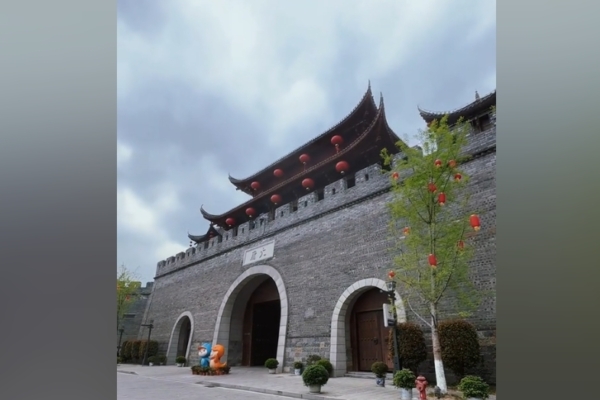In Hunan Province, Zhangjiajie spent 2.4 billion RMB to build the Dayong Ancient City, which has been in operation for four years and has incurred losses of 1.08 billion RMB. Out of 198 commercial properties, only 5 have been rented out, with the daily audience for entertainment activities averaging less than 15 people. What was once a thriving tourist destination has now turned into an “investment black hole”.
According to a report by CCTV News on June 28, the Dayong Ancient City was once a local “star project”, but the so-called “ancient city” built with massive investments has now turned into a deserted place. Despite not charging an entrance fee, the Dayong Ancient City remains deserted. Among the occasional visitors, tourists are in the minority, with more local residents coming to play sports, walk their dogs, or spend time with their children.
The Dayong Ancient City was proposed in March 2016 and construction began in June of the same year. It covers an area of 240 mu, equivalent to 22 football fields, with a building area of 165,000 square meters. The planned annual revenue was 500 million RMB and a net profit of 200 million RMB. However, it has continuously operated at a loss since its soft opening in June 2021 and is now on the verge of bankruptcy.
The 198 commercial properties in Dayong Ancient City are mostly closed, with only four or five being rented out. The core entertainment project “Encountering Dayong” cost 500 million RMB but only attracted a peak flow of 349 people. In the first half of 2024, the flying cinema and cruise ship attraction only sold 2,300 tickets, with an average daily visitor count of fewer than 15 people.
According to the public annual report released by Zhang Travel Group, the Dayong Ancient City reported losses of 84 million RMB in 2021, 151 million RMB in 2022, 249 million RMB in 2023, and a staggering 596 million RMB in 2024. In the span of four years, the total net loss amounted to 1.08 billion RMB, with the only profitable operation being the parking lot.
It is worth noting that this project is not only one of the top ten key industrial projects and key projects in Zhangjiajie City, but also a key construction project and major industrial construction project in Hunan Province.
The operating company of the Dayong Ancient City project is the “Zhangjiajie Dayong Ancient City Development Co., Ltd.,” with its parent company being the “Zhangjiajie Tourism Group Co., Ltd.,” a publicly traded company under municipal administration, with the actual controller being the State-owned Assets Supervision and Administration Commission of Zhangjiajie City. By the end of 2024, the total assets of the Dayong Ancient City company were 1.395 billion RMB, total liabilities were 1.697 billion RMB, resulting in net liabilities of -0.302 billion RMB.
The main reasons for the project’s failure include: following trends, starting hastily, and having similar architectural styles and layout designs with no unique appeal, leading to a lack of foot traffic and tarnished reputation.
Apart from Dayong Ancient City, there are many other artificially built ancient cities and towns across the country facing similar predicaments.
According to New Weekly, national records show that many tourism development or investment companies behind ancient cities and towns have been deregistered or gone bankrupt. For example, the company responsible for the development of Suicheng Town in Hebei, the Baoding Suicheng Ancient Town Tourism Development Co., Ltd., was deregistered in 2020. Similarly, the Shuidong Ancient Town in Xuanzhou District, Anhui Province, is now closed due to poor operation.
The Taohuayuan Ancient Town in Changde, Hunan Province, which saw a decent number of visitors during its soft opening in 2016, has gradually become deserted from the second year onwards and is now almost an abandoned settlement. Some operating companies behind artificially built ancient cities and towns still exist, but the projects have been largely abandoned or sparsely populated.

